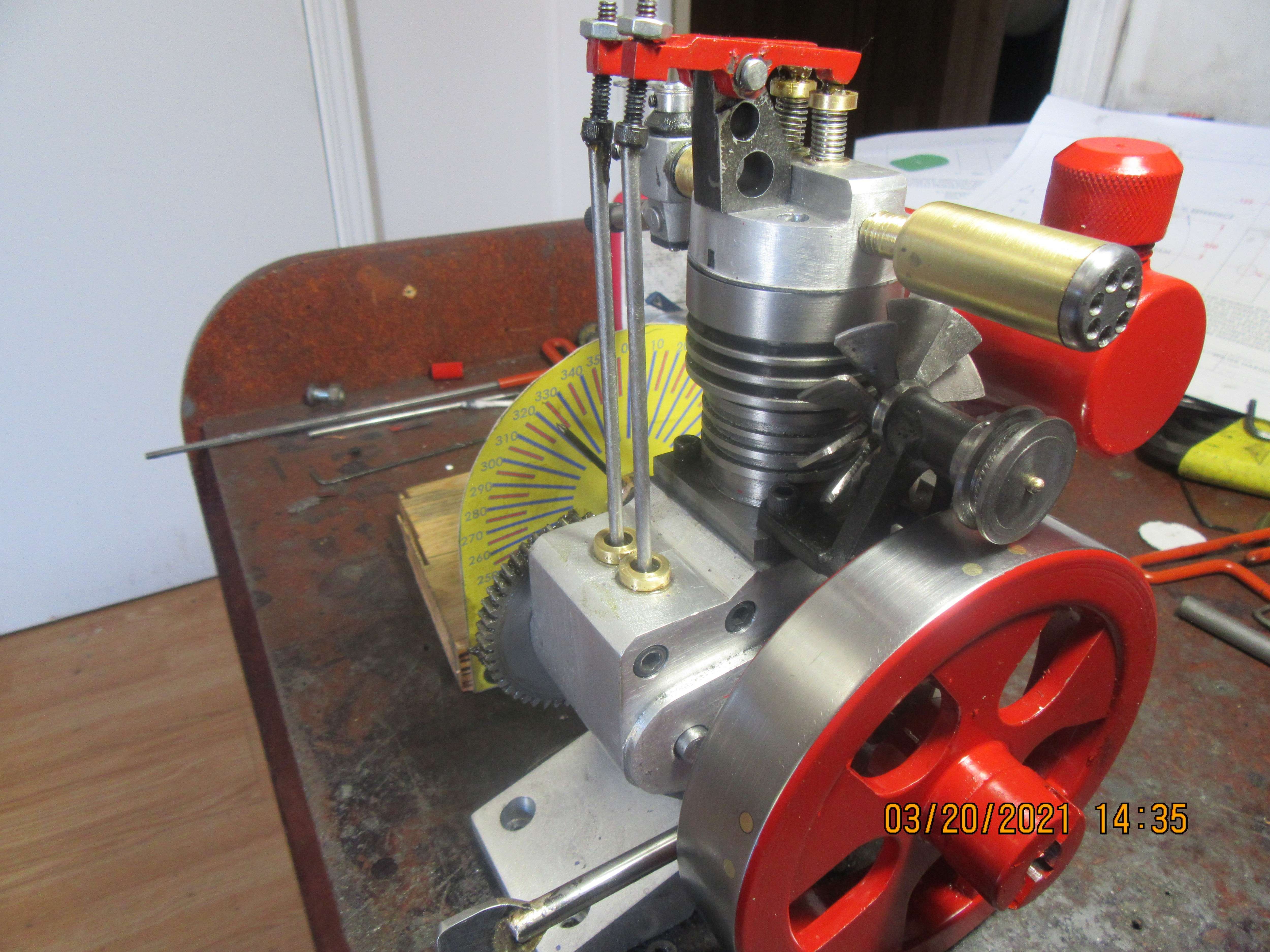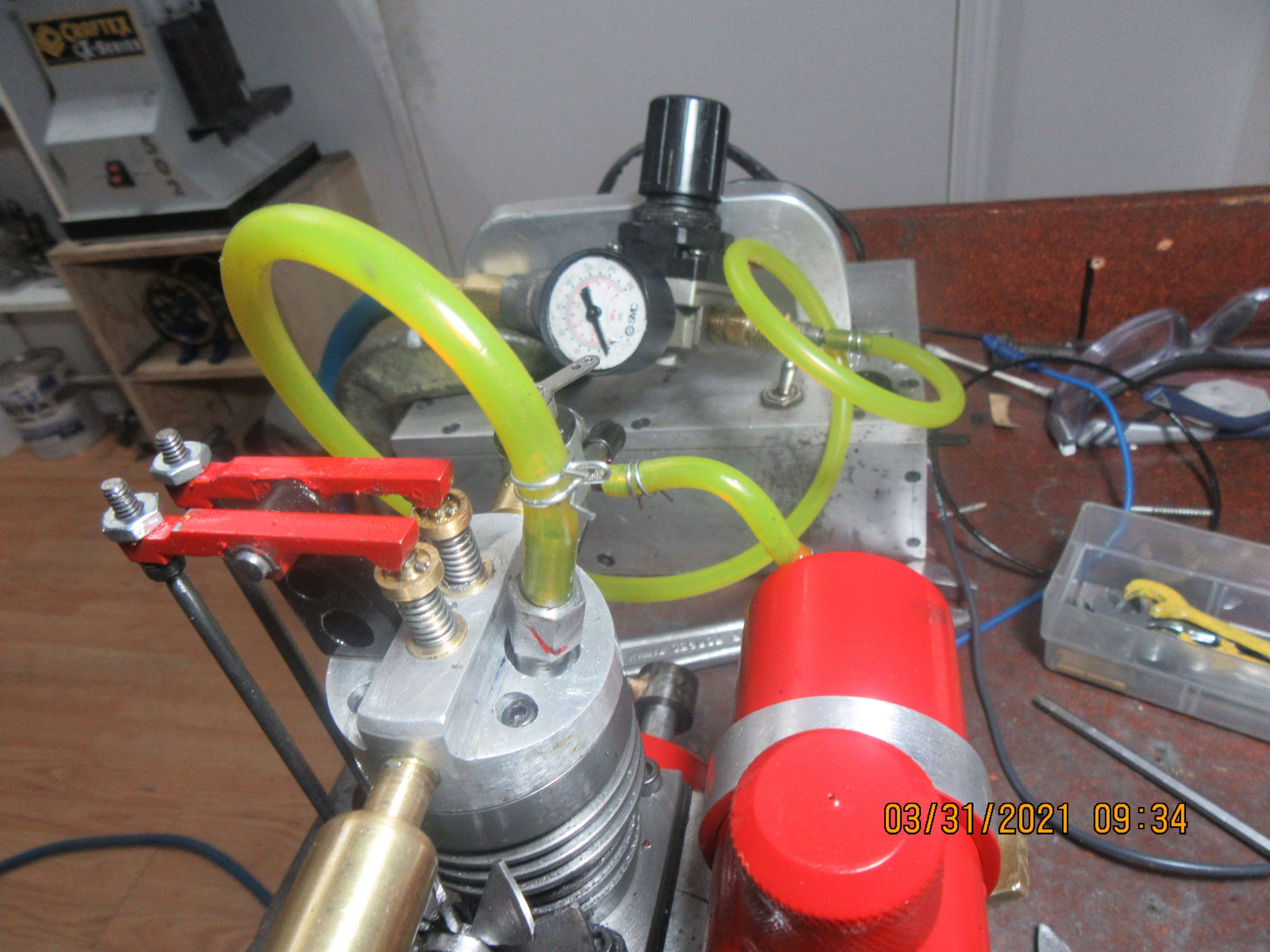glue-itcom
Well-Known Member
- Joined
- Apr 10, 2013
- Messages
- 216
- Reaction score
- 298
Looks like you could fit a neoprene o-ring on the fan pulley and just run it on the surface of the flywheel. Might be easier than a big belt around both.The gaskets are all made and installed (except for the one between the crank-case halves). The ignition timing has been set. In this picture I am setting the exhaust valve opening with a printed degree wheel and a pointer attached to the crankshaft. This valve is easy to set. I just loosen off the set screws holding the small gear to the crankshaft, rotate the flywheel until the piston is at the very top of it's stroke (as determined by a a hex wrench down the sparkplug hole resting on top of the piston), this corresponds with the zero degree mark on the degree wheel. Then turn the flywheel until the pointer is pointing at 25 degrees before bottom dead center and lock the crankshaft in position. Then I turn the large gear on the camshaft in the appropriate direction, until the cam just contacts the lifter and starts to move the rocker arm. Then I tighten the set screws in the small gear on the crankshaft in that position. Setting the intake cam position is going to be considerably more difficult, as I have no access to the cam to lock it to the cam shaft. I will have to calculate the degrees of offset between the intake and exhaust valve and remove the camshaft from the engine to set that. For the sake of the picture I have turned the flywheel and crankshaft to a position that shows the pointer.

Really like the design





